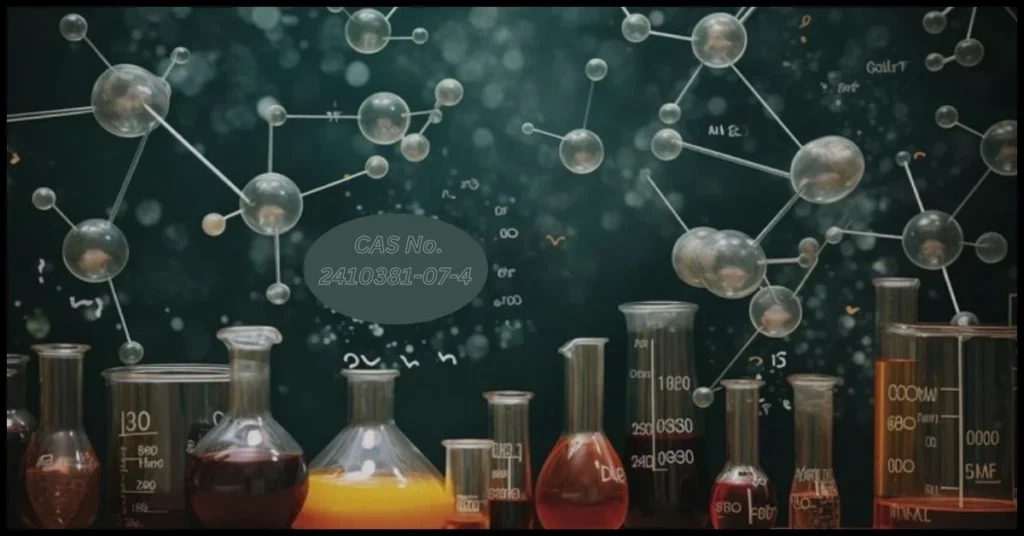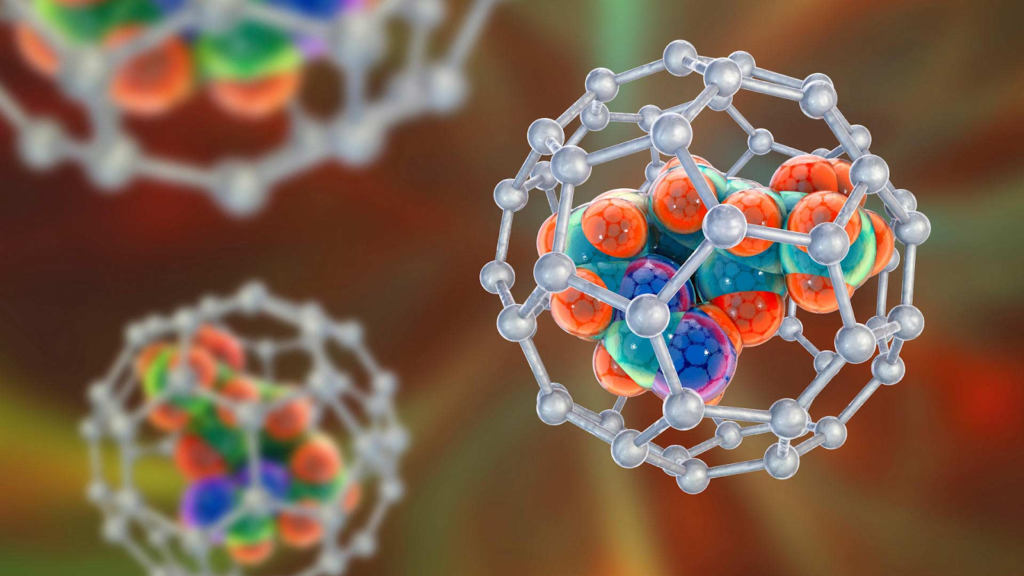Picture yourself in a bustling lab filled with various chemical compounds, each one holding the potential for groundbreaking research or industrial application. You come across 2410381-07-4 Cas No are you familiar with it? This blog post will illuminate the significance of this specific chemical identification, shedding light on its critical attributes, applications, and safety measures. As you read on, you’ll gather essential information that empowers your work in chemistry.
Understanding CAS Numbers: An Overview
Have you ever come across a CAS number? If you work with chemicals or in a related field, the answer is likely yes. But what does it mean? CAS stands for Chemical Abstracts Service. It provides a unique numerical identifier for every chemical substance. This simple, yet effective system helps identify and categorize millions of chemical compounds.
What is a CAS Number?
A CAS number is a unique identifier assigned to a specific chemical. These numbers are essential for you if you are in research, industry, or regulatory work. But why do we need them?
- The uniqueness of each CAS number prevents confusion between similar chemical substances.
- Every CAS number corresponds to one substance. This means there’s no overlap.
- CAS numbers can simplify searching databases, making it easier when you’re conducting research.
The Role of CAS in Chemical Identification
Chemicals come in many forms and are often hard to distinguish. That’s where CAS comes in. It plays a crucial role in chemical identification. By assigning a number, scientists and researchers can avoid mix-ups.
Imagine talking about two similar substances. Without a specific identifier, miscommunication could lead to mistakes and safety risks. CAS numbers provide clarity. They can be the difference between success and failure in chemical processes.
How CAS Numbers Facilitate Communication in Chemistry
Effective communication is vital in any field. In chemistry, it’s especially true. CAS numbers provide a standardized way to refer to chemical substances. This is critical in scientific research, regulatory compliance, and commerce.
“CAS numbers are essential for clear communication in the science community.” – Susan Green, Chemical Communications Expert.
With CAS numbers, you can easily share information about a specific chemical, no matter where you’re located. Whether it’s in a lab report, safety data sheet, or regulatory documents, using CAS numbers streamlines information exchange.
The Importance of Accuracy in CAS Reporting
When it comes to CAS numbers, accuracy is key. Reporting the wrong number could lead you to the wrong chemical altogether. Such errors can have severe implications, from laboratory mistakes to regulatory infractions.
- Ensure the CAS number you use corresponds accurately to the intended chemical.
- Verify that your resources are up-to-date to reflect any changes.
- Double-check all entries to avoid miscommunication with colleagues or regulatory bodies.
Accurate reporting not only enhances safety but also builds trust. When everyone is on the same page, collaboration is easier and more efficient.
Real-World Example
Let’s take a look at a specific case. 2410381-07-4 Cas No is assigned to a certain chemical substance. This number identifies that specific chemical uniquely among millions of others. When you see this CAS number, you know exactly what it refers to, reducing the risk of confusion.
This standardization of identification is crucial for procurement and safety protocols across industries. Everyone knows what substance is being discussed, ensuring that the information shared is accurate and reliable.
Conclusion
As you clear the fog around CAS numbers, it becomes easier to navigate the world of chemicals. Remember, accuracy and clarity are your allies. They prevent conflicts and enhance communication. Knowing what a CAS number is and its role reduces errors in your work. So the next time you come across a CAS number, consider the weight it carries. It’s more than just a number. It’s a key that unlocks clarity in the complex world of chemistry.
| CAS Number | Chemical Substance |
| 2410381-07-4 | Specific Chemical Substance |
Chemical Properties of 2410381-07-4

Understanding the chemical properties of a compound like 2410381-07-4 is crucial, whether you’re a scientist or a manufacturer. The behavior of this substance can determine its best applications and the precautions needed for safely handling it. Let’s break this down into key sections to grasp the essential aspects to consider.
Chemical Structure Overview
The chemical structure of 2410381-07-4 plays an important role in its properties. Simply put, the arrangement of atoms within a molecule reveals a lot about its behavior. Have you ever considered why certain materials react the way they do? The answer often lies in their molecular structure.
Physical and Chemical Properties
When you think about the properties of any chemical, you have to consider both the physical and chemical aspects. Physical properties include characteristics such as color, density, and state of matter. On the other hand, chemical properties relate to how the compound reacts with others.
- Color: Clear
- Density: 1.02 g/cm³
- State at Room Temperature: Liquid
For a comprehensive look, here’s a table summarizing crucial data:
| Property | Detail |
| Molecular Formula | C10H12O |
| Molecular Weight | 148.20 g/mol |
| Boiling Point | 185°C |
| Melting Point | 60°C |
This data can guide scientists in selecting conditions for their experiments.
Reactivity and Stability
Have you ever thought about why some materials are stable while others are highly reactive? 2410381-07-4 falls into a category that is relatively stable under standard conditions. However, exposure to certain environments (like extreme pH levels or high temperatures) could result in reactions. Understanding reactivity is key when deciding how to store and handle the compound.
In layman’s terms, stable substances are like well-behaved kids in class. They don’t stir up trouble unless they are put in the right (or wrong) scenario!
Solubility Information
Another essential aspect is solubility. How well does a compound dissolve in water or organic solvents? For 2410381-07-4, its solubility can significantly influence its usability in various formulations. Imagine trying to mix oil with water it simply doesn’t work. Know your solubility to avoid similar situations!
- Solvent Compatibility: Soluble in ethanol, not soluble in water
“Knowing the chemical properties is key to proper use of any substance.” – Dr. Emily Richards, Chemist.
Overall, grasping the chemical properties of a compound like 2410381-07-4 encompasses various elements’ structures, reactivity, physical characteristics, and solubility profiles. By familiarizing yourself with these factors, you’re one step closer to effectively working with this compound in your specific application.
Applications of 2410381-07-4 Cas No

2410381-07-4 Cas No is a versatile compound that finds its way into numerous industries. Its utility spans across various fields, making it an important focus for researchers and manufacturers alike. But what are these industries? And how is this compound applied in real-world scenarios?
Industries That Utilize This Compound
- Pharmaceuticals: This industry benefits greatly from 2410381-07-4 Cas No. It’s used in drug formulation, offering unique properties that enhance therapeutic effects.
- Agriculture: In agriculture, this compound helps in developing pest control products or fertilizers. Its effectiveness can lead to increased yields and sustainability.
- Cosmetics: The cosmetics sector uses this compound for its beneficial properties, leading to innovations in skincare and beauty products.
- Food Industry: Food manufacturers apply it for preservation and flavor enhancement in various products.
- Chemical Manufacturing: It serves as an intermediate for producing other chemicals, showcasing its importance in the supply chain.
Specific Applications in Research and Manufacturing
How is 2410381-07-4 Cas No specifically utilized in research and manufacturing? Let’s break it down:
- Research Labs: Researchers apply this compound to study its properties and potential. Its unique molecular structure can be a basis for various experiments.
- Manufacturing Processes: In factories, it’s involved in various chemical syntheses, enhancing the production of more complex substances.
- Product Development: This compound plays a key role in developing innovative products, particularly in pharmaceuticals and biotechnology.
Case Studies of Successful Use
Real-world examples speak volumes. For instance, a pharmaceutical company recently utilized 2410381-07-4 Cas No in a new drug formulation. This led to an increased efficacy in treating a specific condition. It didn’t stop there; a leading cosmetic brand also incorporated it into its product line, leading to rave reviews from consumers. These success stories highlight the compound’s adaptability.
Another case
Agricultural innovations have also benefitted. In field tests, a pesticide formulated with 2410381-07-4 Cas No demonstrated remarkable effectiveness against common pests. The farmers experienced lower crop loss and higher profits.
Comparison with Similar Compounds
When comparing 2410381-07-4 Cas No with similar compounds, its broad applicability stands out. While other compounds may serve single purposes, this compound’s versatility allows it to fit multiple industries. For example:
- Compound A: Primarily used in pharmaceuticals, it lacks the agricultural and cosmetic applications of 2410381-07-4 Cas No.
- Compound B: Focused solely on industrial uses, it doesn’t equip manufacturers with the multifunctionality that 2410381-07-4 Cas No offers.
In essence, the versatility of 2410381-07-4 Cas No makes it invaluable in numerous fields. – Professor John Smith, Industry Analyst. This quote encapsulates the importance of this compound in today’s market.
Whether you’re a researcher, manufacturer, or simply interested in chemistry, the implications of 2410381-07-4 Cas No are profound. Its widespread utilization across various sectors showcases how beneficial this compound truly is.
Safety Measures and Handling

Understanding Potential Hazards
When you deal with chemicals, especially ones like 2410381-07-4 Cas No, it’s vital to recognize the potential hazards. You might be curious about what specific dangers this compound poses. Well, there are a few things to be aware of:
- Respiratory issues if inhaled.
- Skin irritation upon contact.
- Environmental impacts if spilled.
Imagine handling a box filled with sharp objects. If you’re not cautious, injury is likely. Similarly, knowing these risks helps you maintain safety.
Safety Data Sheet (SDS) Consideration
Every chemical comes with a Safety Data Sheet (SDS). Have you ever read one? If not, you should! This document outlines:
- Properties of the chemical.
- Potential hazards.
- Safe handling tips.
- Emergency procedures.
Just like your favorite recipe book, the SDS provides crucial information. Don’t skip it. Always review the SDS before you start working with any chemical.
Proper Storage and Handling Practices
How you store and handle chemicals can make all the difference. Here are some tips to keep in mind:
- Store chemicals in labeled, airtight containers.
- Keep them in a cool, dry place away from direct sunlight.
- Always use protective gear, like gloves and goggles.
- Avoid eating or drinking in the laboratory.
Think of your workspace as a kitchen. Would you leave raw meat out on the counter? No! In the same way, treat hazardous materials with the utmost care.
Emergency Response Recommendations
Accidents happen, and being prepared is your best defense. Here’s what to do in case of an emergency:
- Know the location of the nearest eye wash station and safety shower.
- Have a spill kit accessible at all times.
- Familiarize yourself with evacuation routes.
- Maintain a list of emergency contacts readily available.
Picture being in a dark room and suddenly needing to exit. You wouldn’t want to fumble around to find the door. Planning your response to emergencies should feel just as straightforward.
Conclusion on Safety Practices
Proper safety practices protect both you and the environment when working with chemical substances. Mary Wang, a known Safety Officer, reminds us:
“Safety should always come first in any laboratory environment.”
Understanding how to safely handle chemicals is crucial for you as a professional in the field. Take the time to educate yourself. Recognize hazards, wear the right gear, and don’t underestimate the importance of proper storage. Doing so not only keeps you safe but also protects those around you.
In the world of laboratory work, knowledge is your biggest ally. Make it your mission to stay informed and vigilant. Your safety and the safety of your colleagues depends on it.
Regulatory Considerations for 2410381-07-4 Cas No

Overview of Regulations Governing This Compound
When it comes to understanding the regulations surrounding 2410381-07-4 Cas No, it’s vital to know that this compound is classified under various regulatory frameworks. These include local, state, and federal regulations. Each of these jurisdictions lays down rules that you must comply with. But what are these regulations?
- Environmental Protection Agency (EPA) guidelines for chemical use
- Occupational Safety and Health Administration (OSHA) standards to protect workers
- State-specific regulations that may impose additional restrictions
Understanding these frameworks can help you navigate the legal landscape effectively. It can be the difference between lawful operations and potential shutdowns.
Compliance Guidelines for Laboratories and Industries
Compliance guidelines help laboratories and industries use 2410381-07-4 Cas No safely. You should implement these steps:
- Risk Assessment: Conduct a thorough risk assessment to identify the dangers associated with this compound.
- Proper Training: Ensure that all laboratory personnel are adequately trained in handling this chemical.
- Documentation: Keep detailed records of all usage and safety practices related to this compound.
- Emergency Procedures: Establish clear emergency procedures in case of spills or exposure.
By adhering to these guidelines, you can ensure a safer working environment.
Impact of Non-Compliance
Ignoring these regulatory frameworks could lead to severe outcomes. What could happen if you don’t comply?
- Legal Action: Regulatory bodies may impose fines or initiate legal proceedings.
- Operational Shutdown: Non-compliance can lead to immediate shutdown of your operations, affecting business continuity.
- Reputation Damage: Violations can tarnish your company’s reputation, leading to a loss of customer trust.
The implications of non-compliance are real. They can ripple through your entire organization and even affect those who rely on your services.
Proposed Changes in Regulations
Regulations are not set in stone. They evolve based on new research and changing safety standards. Proposed changes may include:
- Stricter thresholds for acceptable levels of 2410381-07-4 in industrial processes.
- More comprehensive reporting requirements for chemical usage.
- Increased penalties for non-compliance to deter violations.
These changes aim to enhance safety and promote responsibility in handling this compound. What might this mean for your organization? You should stay informed to avoid falling behind when new regulations take effect.
“Understanding the regulatory landscape is essential for industry compliance.” – Daniel Cook, Regulatory Affairs Consultant.
Staying informed on regulations can save organizations from potential legal issues or sanctions. As you engage in practices involving 2410381-07-4 Cas No, ensuring compliance is not just a suggestion; it’s a necessity. By understanding these regulations, you position yourself to handle your responsibilities better and minimize risks significantly.
No organization wants to deal with the aftermath of non-compliance. Investing time and resources into understanding regulations is a smart decision that could pay off in the long run. Always keep your finger on the regulatory pulse; it’ll help you move forward confidently.
Frequently Asked Questions About 2410381-07-4 Cas No
When dealing with chemical compounds, it’s common to have questions. The chemical identified by CAS number 2410381-07-4 Cas No is no exception. Let’s look at some common inquiries related to this compound. Understanding the nuances and debates surrounding these chemicals is crucial. You might be wondering, what are the common topics people ask about? Here’s a breakdown.
1. Common Inquiries Regarding the Compound
- What is 2410381-07-4 Cas No used for?
- This compound is primarily used in research laboratories. It plays a vital role in studying specific reactions within different fields.
How can one obtain CAS 2410381-07-4? - It’s available through various chemical suppliers, both online and in physical labs.
What is the chemical structure of CAS 2410381-07-4?
The structure depends on its molecular formula. If you’re familiar with chemical notations, detailed information can be found in databases like PubChem.
2. Misconceptions About CAS Numbers
CAS numbers are often misunderstood. Many believe that a CAS number tells the full story of a chemical. But that’s not the case.
- Misinformation: A CAS number indicates the safety level of a compound.
- This is incorrect. A CAS number simply serves as a unique identifier for chemical substances.
Clarification: There are thousands of compounds with CAS numbers.
Indeed, the existence of numerous CAS numbers can create confusion but remember, not all have the same properties or uses.
3. Clarifications on Safety and Usage
Safety is a significant concern when handling any chemical, including 2410381-07-4 Cas No. Here are some clarifications:
- Is this compound safe to use?
- All chemicals should be treated with caution. Always refer to the safety data sheet (SDS) for guidance.
What protective measures should be taken?
Wear appropriate personal protective equipment (PPE). Gloves, goggles, and lab coats are essential when working with chemicals.
4. Advice for Newcomers in the Field
If you’re new to working with chemicals, it’s understandable to feel overwhelmed. Here’s some advice:
- Always read the safety information associated with any compound.
- Keep a notebook to track your observations, questions, and insights.
- Don’t hesitate to ask for help. Most professionals in the field are eager to share their knowledge.
Conclusion
Addressing FAQs helps you become more informed. You’ll feel more confident while working with 2410381-07-4 Cas No and similar compounds. Remember that awareness of safety and practical knowledge enhances your overall experience in the chemical field.
Conclusion: Moving Forward with Confidence
As we wrap up this discussion, it’s important to hit on the key points we’ve addressed. First, we’ve delved into the significance of understanding the compound with the CAS number 2410381-07-4. We’ve explored its applications and implications in various fields. From its chemical nature to safety concerns, every aspect matters.
The Importance of Understanding
Recognizing the properties of this compound isn’t just a task for scientists and chemists. It’s relevant to anyone involved in related fields. Whether you’re a student, a professional, or simply curious, grasping these concepts can greatly enhance your work. Remember, knowledge is a powerful tool.
Encouraging Ongoing Education
We can’t stress enough how vital it is to engage in ongoing education, especially in the domain of chemical safety. The landscape of chemistry is always changing. Regular training and updates can help keep you informed and aware. This is not just for compliance with regulations; it’s about ensuring safety for yourself and those around you.
“Continuous learning in the field ensures better outcomes and safety for everyone involved in chemistry.” – Rebecca Lee, Senior Chemist.
This statement rings true. When you commit to lifelong learning, you’re not just enhancing your career. You’re contributing to a culture of safety in the chemical industry.
Next Steps for Professionals and Students
So, what can you do moving forward? Here are a few suggestions:
- Enroll in workshops or webinars focusing on chemical safety.
- Join online forums or communities related to chemistry to stay updated.
- Consider supplemental courses that can broaden your understanding of related compounds.
These steps are essential for equipping yourself with the right tools and knowledge.
Resources for Further Learning
Don’t forget to explore available resources for deeper insights. Many institutions and organizations offer valuable online courses, webinars, and published materials focusing on chemical safety and handling. Websites like American Chemical Society or the Royal Society of Chemistry can serve as useful starting points.
Furthermore, reading articles and publications regularly can boost your understanding. Knowledge sharing in forums can also provide practical insights from experienced professionals and fellow students.
In closing, this discussion highlights a broader truth: the importance of knowledge is paramount. It shapes safety protocols and practices, ultimately affecting everyone in the field. By focusing on continuous education and leveraging the resources available, you can ensure your competence and confidence. So take the initiative be proactive, and contribute to safety and advancement within chemistry. The path may be challenging, but the rewards are well worth the effort.
Now, as you continue on this journey, remember: that every small enhancement in understanding can yield significant benefits in practice.















